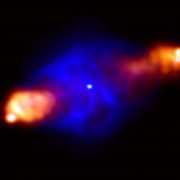“As US funding wanes, European scientists are taking the lead in the search for extra-terrestrial life. A network of interconnected radio telescopes is the latest advance – and a bid is in place to link Ireland to the grid, enabling us to take huge photos of the night sky, writes JOHN HOLDEN” in the Irish Times.
http://www.irishtimes.com/newspaper/sciencetoday/2011/0623/1224299446785.html
“Low Frequency Arrays (Lofar) are giant multipurpose sensor radio telescopes which can look at large portions of the sky all at once,” explains Trinity College astrophysicist and member of the Irish Lofar consortium, Dr Peter Gallagher.
“The kinds of things you can see include hydrogen, which is all over the universe, as well as the sun, Jupiter, quasars, pulsars, exploding stars and remnants of exploding stars – anything that emits radio waves.”
“When looking for ETI through radio astronomy, you look for the kinds of signals that we ourselves might produce,” explains Dr Anna Scaife of the Dublin Institute of Advanced Studies.
“Natural signals would look more broadband. You try to detect something like airport radar but from another planet. So we’re searching for signals that look man-made. The waves should look narrow and happen at particular wavelengths.”

